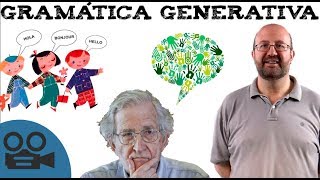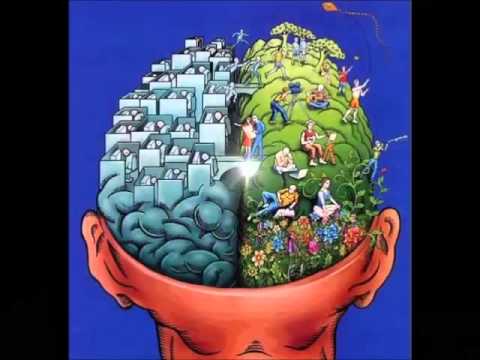Generative Grammar or so-called Transformational Generative grammar is a linguistic concept study coined by Noam Chomsky. In 1957 Chomsky introduces his new ideas through a book called Syntactic Structure.

The theory of transformation is one school of linguistic assumes that language learning is a process of establishing the rule and not as the formation of habits, as believed by the flow of structuralism and supported by behaviorism. This transformation language theory is associated with US linguist Noam Chomsky.Meaning of generative grammar is that language is the system of the human mind. Chomsky’s theory of transformational-generative linguistics is a theory that explains clearly the establishment of grammatical sentences and explains the external structure to determine a sentence.
Principles of Language Learning:
Learners do not have to be given training (drill) is an intensive but simply guided only by the teacher
- Because of the ability to learn a language is a creative process, the learner should be given ample opportunity to be creative utterances in real communicative situations, not just imitating and memorizing.
- Teachers give rules of language and further developed by the learner.
- Selection of the subject matter is not emphasized in the results of contrastive analysis, but rather on the needs of communication and mastery of language functions.
- Rules can be given as long as it is required by the learner as a platform to be creative utterances communication needs.
- Teachers must make sure that students are able to internalize the rules that allow the student is able to produce sentences.
You Must Know The Example of this Generative Grammar Theory:
We elaborated a popular example of a pair of this sentence:
The man is willing to please.
The man is easy to please.
Given its structure, both are exactly the same, both are patterned the same sentence, ie S + to be + adjective + to infinitive .The only difference is vocabulary adjective:
If we look more closely, it turns out the two adjectives eager and easy has its own semantic depth and also brought the structural impact of syntax independent anyway. The proof is the second sentence above expressed in another way, but repeated with the same pattern, the second sentence is clearly different.
When we use the IC analysis, the second sentence above will be treated the same, but there are different depths. Perhaps we conclude this way. In both of the above sentence, the man has two roles. In the first sentence, the man who did the job, he is pleasing. In the second sentence, the man who became the object of pleases. Now we can say that the man as the underlying subject of the first sentence and as the underlying object second sentence.
Transformational flow
- The assumptions underlying this transformational approach to language is as follows:
- Language is a human creative cultural phenomena.
- Language is not a recording of behavior outside a sound that can be heard, but the language is a mentalist process that would later be born in the outer form of speech sound is heard or later manifested in the form of stationery.
- Language is a productive process, so that the language analysis methods must be deductive.
- Mathematical formalization can also be used on the formalization of the productive system language.
- Analysis of language cannot be separated from the intact nature of language sounds and meanings.
According to Chomsky, one of the objectives of the study of language is to compile the grammar of the language. Language can be regarded as a collection of sentences consisting of a row of sounds that have meaning. Every grammar is a theory of language itself, and grammar it must meet two requirements, namely:
- Sentences generated by the grammar that must be accepted by the users of these languages, as the sentences were reasonable and not contrived.
- The grammar should be shaped in such a way, so that the term used is not based on any particular language symptoms, and these must be aligned with linguistic theory.
Chomsky distinguishes between the ability ( competence ) and deeds speak ( performance).
Competence is a knowledge that it is in the human brain that gives him the possibility to carry out the process of speaking. In other words, competence is the knowledge of being owned by the user language about language. He argues that the actual phrase that we hear from a speaker the particular language that is generally sentences new ones.
While the performance is a reflection of the competence, which is also affected by various mental situation and estate environment such as limited memory, negligence, carelessness, and so on. Therefore, so that performance is really a reflection of the competence or the sound and meaning with the rules of competence. In other words we can say that the performance is the use of language itself in a real situation.
According to this flow a grammar should consist of a group of a certain number of rules, but can produce sentences that are unlimited. A person can make a variety of sentences that are unlimited and can he understand which is where most of the sentence perhaps never spoken or heard. The capability is called the creative aspects of language.
Structuring Generative Grammar
B. Transformational Flow Characteristics
- Based on the notion mentalist
It argues that the language is not simply the process of isolation, but it stands out as a mental process. The process of speaking is not just a physical process in the form of sound as a result of the vibrating source received by the auditory apparatus, but in the form of mental processes inside the participants speak. Therefore, the flow is very closely related to psycholinguistic
- Language is innate
The full transformation assumes that language is a factor of innate (hereditary). In this case, to prove his theory with the help of his colleague Chomsky proved that the structure of the human brain by chimpanzee brains are exactly the same, except for the knot of nerve talking that exist in the human brain structure is absent in the chimpanzee brain structures. That is why chimp can not speak like humans, although he has trained many times, because it is not caused by the habit, but there must be genetic.
- Language Consisting of Surface Layer In and Lapis
The theory of transformational language separates the top two layers, namely the deep structure (deep structure / inner layer) is where the process of speaking real / is mentalist; and surface structure (the outside structure, the outer structure).
- Language Consisting of Competent Elements and Performance
competent knowledge possessed by a speaker of the language is competence, performance is that a person skilled in using the language.
- Analysis of Language Based on Sentence
This flow assumes that the sentence is grammatical the highest level.
- Distinguish Core Sentences and Sentence Transformation
Kernel sentence is a sentence that has not been subjected to the rules of transformation, has characteristics (a) complete, (b) simple (c) active (a fundamental feature), (d) statement (e) positive (f) coherent (the extra features).
Advantages and Weaknesses of Transformational:
- Excellence Flow Transformations
- Speak process is also process of mental activity.
- Explicitly separating linguistic knowledge with skill language (linguistic competence and linguistic performance)
- Can form other constructions creatively based on the existing rule.
- With a core differentiation and transformation sentence can be divided between three parts..
- It can produce an infinite number of sentences for gramatiknya is generative.
- Weakness Flow Transformations
- Does not recognize the existence of the clause and therefore can not sort out the concept of clauses and sentences
- Language is an innate though humans have innate to speak but without the accustomed or trained impossible that would be.
- Each language has always returned to the deep structure.
CONCLUSION:
From the above discussion we can conclude basic grammar mind transformation as follows:
Language speakers, With this Competence ability can produce new sentences and understand sentences that he had not heard. The grammar is a set of sentences. Every sentence consists of a number of basic elements that have a specific structure and each sentence can be realized many times.
Generative Grammar, a concept in linguistics introduced by Noam Chomsky, focuses on the study of syntax and the set of rules, principles, and processes that govern the structure of sentences in a given language. Here’s a basic overview of its key concepts in tabular format:
| Element | Description |
|---|---|
| Syntax | Study of the rules for forming grammatical sentences in a language. |
| Phonology | Study of the sound system of a language. |
| Morphology | Study of the structure of words. |
| Semantics | Study of meaning in language. |
| Transformational Rules | Rules governing the ways in which sentences can be transformed into other sentences with similar meanings. |
| Deep Structure | The underlying, abstract structure of a sentence that conveys its basic syntactic relations and semantic meaning. |
| Surface Structure | The actual spoken or written form of a sentence, derived from its deep structure. |
| Universal Grammar | Chomsky’s theory that the ability to learn grammar is hard-wired into the brain, suggesting that all languages have a common structural basis. |
| Recursion | The ability to embed sentences within sentences, allowing for an infinite variety of expressions. |
| Language Acquisition Device (LAD) | Hypothetical module in the human brain posited to account for children’s innate predisposition for language acquisition. |
This table provides an overview of the fundamental components of Generative Grammar, emphasizing its focus on the innate and universal properties of human language.
